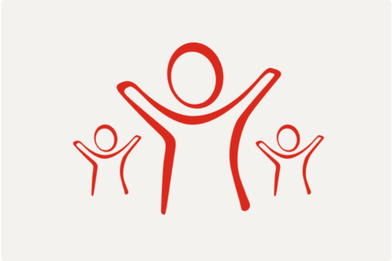A man stands outside a school in flood water in Somalia, where flash flooding risks a rise in malnutrition
Flooding in Somalia has destroyed school buildings like this one. Photo by Awale Koronto/Save the Children. More content available here
MOGADISHU, 24 May 2023 –Extreme flooding across Somalia has left about 118,000 children[i] and 101,000 adults homeless, killed 22 people and left scores more children vulnerable to malnutrition and disease outbreaks, Save the Children said.
WE STAND SIDE BY SIDE WITH CHILDREN IN THE WORLD'S
TOUGHEST PLACES.
Heavy rainfall in Somalia and the Ethiopian highlands had led to the worst flooding in 30 years in the central Somalia town of Beledweyne in the Hiran region with the Shabelle River bursting its banks.
The floods are the latest in a series of extreme weather events in recent years to hit Somalia, where children and communities find themselves at the sharp end of the global climate crisis. The floods come after the worst drought in 40 years following five failed rainy seasons which has decimated livestock and crops, pushing the country to the brink of famine.
These extreme weather events combined with ongoing conflict and surging food prices have left about 8.3 million people[ii] – nearly half of the population – in need of humanitarian assistance with more than 1.4 million people internally displaced[iii], many living in camps.
According to the UN, before the flooding about 6.5 million people were experiencing severe food insecurity and an estimated 1.8 million children facing acute malnutrition.
Sirad*, 28, is a mother of five. She used to live in a rural farm, keeping livestock, cultivated cereals and vegetables for her family. But she fled to Beledweyne eight months ago after drought and ongoing conflict forced her to leave her home. She told Save the Children team that her family has suffered back-to-back displacement in the past five years due to conflict, drought and currently by floods, which has left her family struggling to survive.
“Because of the droughts, we lost many animals, and are left with very little… and then we had to leave because of the conflicts. Our animals were providing milk and meat. We lost many of them during the drought, some survived, but the floods and heavy rains killed them.
Hali*, a 40-year-old mother, spoke to Save the Children from a camp for displaced people where she is living with her husband and children. Her husband, who previously worked as a driver, has been out of work as markets are closed due to flooding, making it hard to get enough food for her children. Hali* is worried that her children are at risk of diseases such as malaria due to lack of shelter and mosquito nets.
She told Save the Children: “We lost our home and our livelihoods. We may not go back to our home anytime soon and that worries me. I am now living with my relative who gave us space to build a tent for my children. This is not the first time that we have been displaced by floods. We also lost our livestock due to flooding in 2019.
“We do not have clean water and food. We also do not have a proper shelter. My last born was sick in the last few days, she is only 15 months old. She had a fever and diarrhea. I brought her to the health facility, and she received medicine and she is getting better now. Doctors told me that because of floods, mosquito bites will increase and waterborne disease will also increase so it is common that children get sick.”
In Beledweyne, Save the Children is providing humanitarian assistance to affected children and their families including providing clean water and sanitation facilities to more than 8,640 households. The aid agency has also mobilized its medical teams and supplies to address health concerns and prevent the outbreak of waterborne diseases. Save the Children is also providing cash assistance to about 900 families so that they can buy food.
Save the Children’s Country Director for Somalia, Mohamud Mohamed Hassan, said:
“We’re coming across families who have been hit by successive crises ranging from conflict to drought and now floods and this is taking a huge toll on them. Before the floods, children were on the brink of starvation as sequentially failed rains brought about the worst hunger crisis in 40 years.
“While humanitarian agencies are working tirelessly to protect and provide humanitarian aid to vulnerable children and communities in Beledweyne, relief efforts are hampered by limited funding. More funds are needed to provide food and critical health care services as well as to assess the damaged, repair basic infrastructure, and develop long-term strategies to mitigate the impact of future floods.
“We’re also calling for increased investment in climate change adaptation for communities in Somalia, including integrated water resources management and implemention of environmental regulation to mitigate the adverse impacts of climate induced crisis.”
Save the Children has been working in Somalia and Somaliland since 1951 and has programmes supporting children’s healthcare, education and food needs. In 2022 Save the Children provided humanitarian aid to about 4.3 million people, including about 2.5 million children.
ENDS
Content available here
For further enquiries please contact:
Delfhin Mugo, Regional Media Manager: Delfhin.Mugo@savethechildren.org
Emily Wight, Global Media Manager: Emily.Wight@savethechildren.org
Our media out of hours (BST) contact is media@savethechildren.org.uk / +44(0)7831 650409
Please also check our Twitter account @Save_GlobalNews for news alerts, quotes, statements and location Vlogs.
[i] Calculation based on OCHA displacement figures of 219,000 people. According to UN data, children make up 53.9% of Somalia’s population. Flood sit rep 1 - May 2023 final eo_publishing.pdf
[ii] OCHA Somalia situation report, 14 May 2023

.jpg-ch11029386.jpg/s56883b4bl3fg73wk7l823i0m5773g5j.jpg?g=top&w=392&h=261&format=webp&itok=ZTvODiIo)

